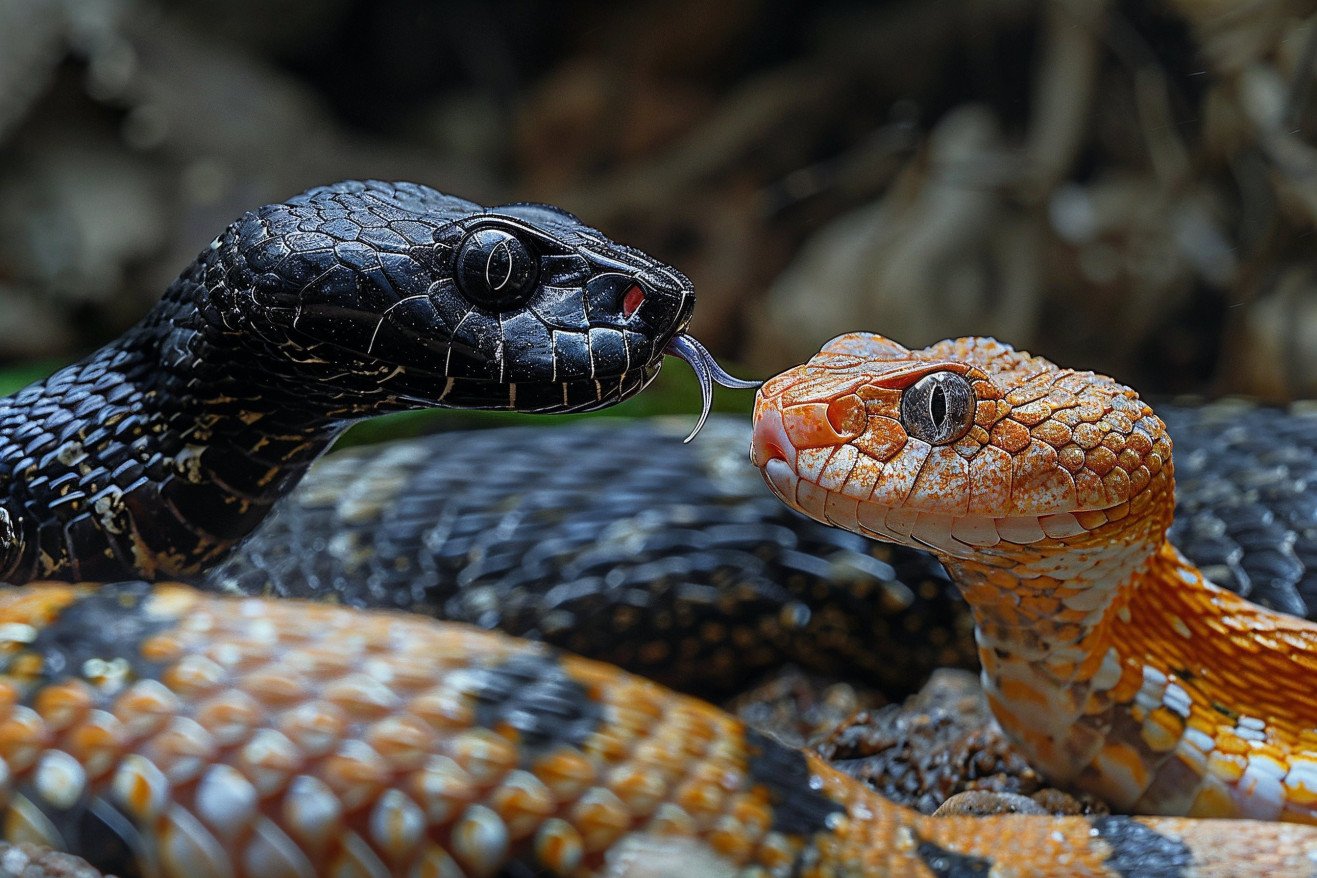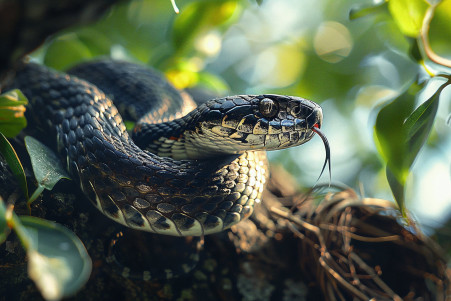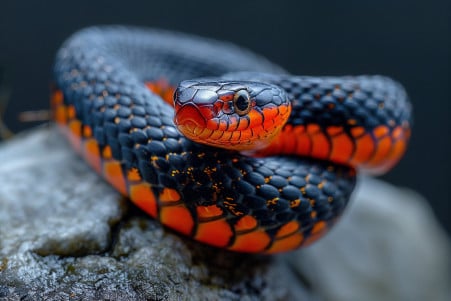Can Black Snakes Kill Copperheads? The Fascinating Predator-Prey Relationship
10 May 2024 • Updated 9 May 2024

In spite of their fierce reputations, black snakes pose little danger to copperheads, and this has led to some interesting interactions between these two snake species. Black rat snakes are known to actively hunt and eat copperheads, and they are one of the few animals that can do so without being affected by the copperhead's hemotoxic venom. As a result, black snakes play a key role in maintaining the natural balance of their ecosystem.
This article will review both field notes and research that has been conducted on the biological and behavioral adaptations that have enabled black snakes to kill and eat copperheads. This will help us understand more about predator-prey relationships, venom resistance, and the roles that these two species play in their environment. In the process, you'll come away with a better understanding of the complex ways that animals have evolved to survive.
Can black snakes kill copperheads?
How to Tell Black Snakes and Copperheads Apart: Important Contrasts and Characteristics
All three of Virginia's venomous snake species are pit vipers, and so are copperheads, according to the Virginia Herpetological Society. Copperheads have hourglass-shaped crossbands that run the length of their bodies, although the bands can be broken. In addition, copperheads have vertical pupils, a heat-sensing pit between their eyes and nostrils, and a single row of scales on the underside of their tails after the anal plate.
Black snakes, including the black ratsnake and black racer, are often confused with copperheads because of their dark coloration. However, according to Elite Animal Solutions, these non-venomous snakes don't have the hourglass pattern that copperheads do. Instead, their patterns are more likely to be blotchy or solid. In addition, black snakes have round pupils, no heat-sensing pits, and a double row of scales after the anal plate.
Being able to tell these visual differences apart is important for living in harmony with these snakes. As the Raleigh News & Observer points out, while copperhead bites are rarely fatal to humans, they can be very painful and expensive to treat. Knowing how to tell venomous copperheads apart from non-venomous black snakes helps ensure that people handle them responsibly and don't come into conflict with them unnecessarily. With a little bit of observation, the differences in their physical traits make it easy to tell copperheads and black snakes apart.
What Black Snakes Eat and How They Hunt
Black snakes, including the black ratsnake, eastern indigo snake, and black racer, eat a variety of small animals, including rodents, birds, lizards, frogs, and other snakes. The WEC214/UW251: "Black Snakes": Identification and Ecology notes that the eastern indigo snake is particularly well-known for its consumption of venomous snakes, including copperheads, which it is able to eat because it is immune to their venom.
Black ratsnakes are known to feed primarily on small rodents, including mice, rats, moles, and chipmunks, which they kill by constriction, according to Britannica. These snakes are excellent climbers and are often found in trees, rock outcroppings, and near buildings, where they search for their prey, according to The Maryland Zoo. By keeping rodent numbers in check, black snakes help maintain a healthy balance in the environment and are often considered beneficial by farmers and homeowners.
Coexistence and Interactions: Black Snakes and Copperheads in Shared Habitats
Copperheads and black snakes are often found in the same types of habitats, including rocky, forested areas and wetlands, which can lead to interactions and competition for resources, according to Facebook. Copperheads are social snakes and may even hibernate in communal dens with other snake species, including black snakes, during the winter, says the Smithsonian's National Zoo and Conservation Biology Institute.
In addition to the eastern kingsnake, the black racer is another black snake species that is known to prey on copperheads, but according to the Greenville Journal, the black ratsnake, the largest and most common black snake species, is not a predator of venomous snakes. However, these species may still compete for resources, including food and territory, because they have similar ecological roles and habitats.
Knowledge of the coexistence and potential interactions between black snakes and copperheads can be used to inform responsible management and conservation of these two snake species. As we'll discuss next, this includes taking measures to discourage these snakes from entering human-inhabited areas.
Encouraging Responsible Coexistence: Preventing Black Snakes and Copperheads From Entering Homes
To prevent black snakes and copperheads from entering homes, it is important to remove potential food sources and hiding spots, says Today's Homeowner. This can be done by keeping lawns and gardens well-groomed, cutting back overgrown plants, and clearing away debris and rocks. The Utah State University Extension also suggests sealing up cracks and crevices in buildings, installing snake-proof fencing, and using natural repellents like ammonia or sulfur to keep snakes at bay.
As reported by The State, reducing the number of rodents, insects, and other prey in a given area can also help keep snakes from coming near homes to find food. If a snake is spotted, it's best to leave it alone or call animal control to have it removed instead of trying to catch or kill it, says Today's Homeowner. By taking these measures, homeowners can encourage responsible coexistence and reduce the likelihood of conflict with these often-misunderstood reptilian residents.
Conclusion: The Complexities and Wonders of Nature
The relationship between black snakes and copperheads is just one example of the many complexities and survival mechanisms that exist in nature. By exploring predator-prey relationships, venom resistance, and the ecological roles of these two species, we can better understand and marvel at the web of life.
Understanding the role of black snakes as a natural predator of copperheads also emphasizes the balance that exists in nature and the importance of conservation that is based on science. By learning about and respecting these misunderstood animals, we can help ensure that we coexist with them safely and protect the biodiversity that is so important to the health of our natural world.
This understanding can also help people feel more connected to nature and more motivated to protect and conserve its many complex and wondrous inhabitants.


